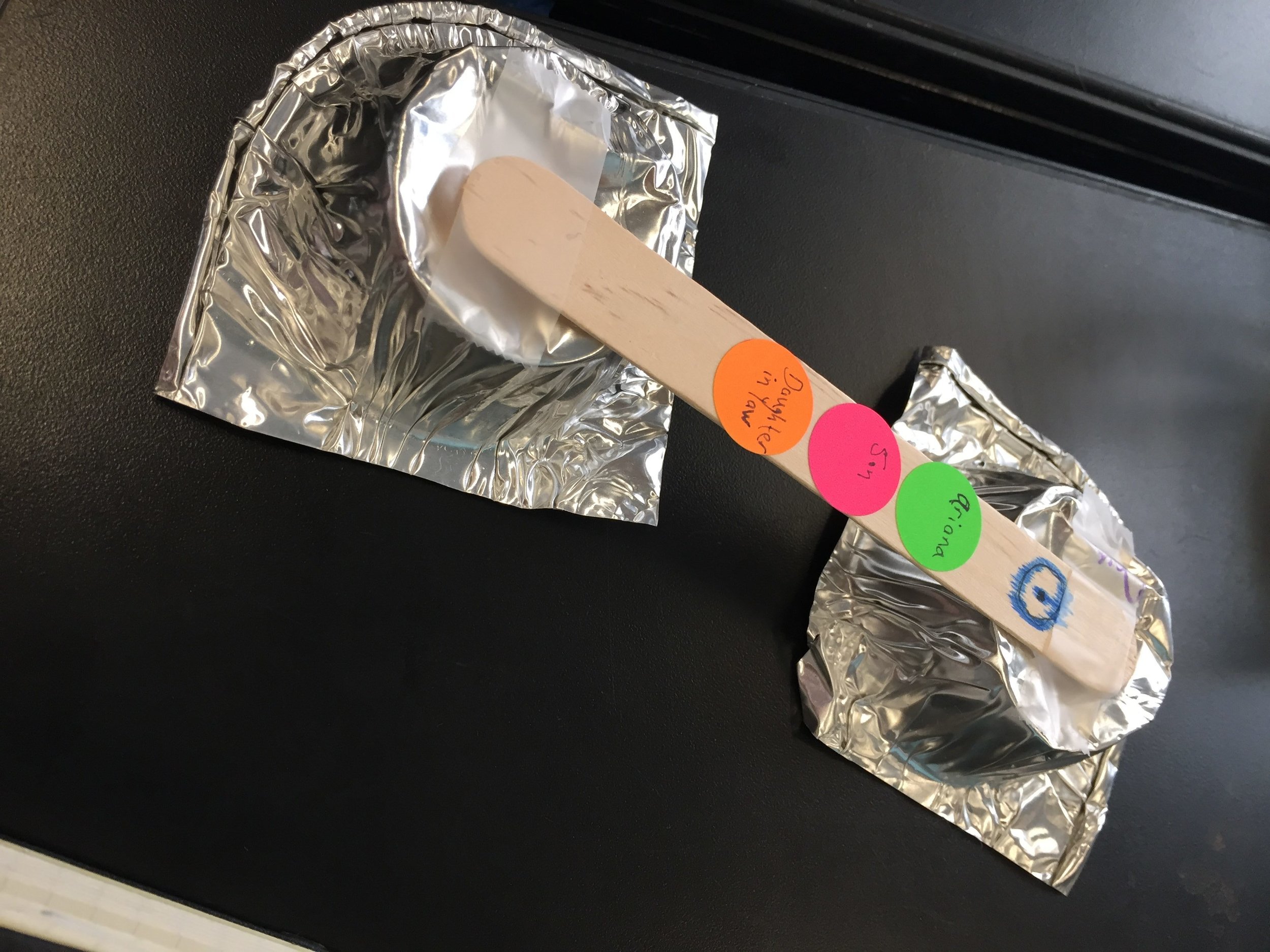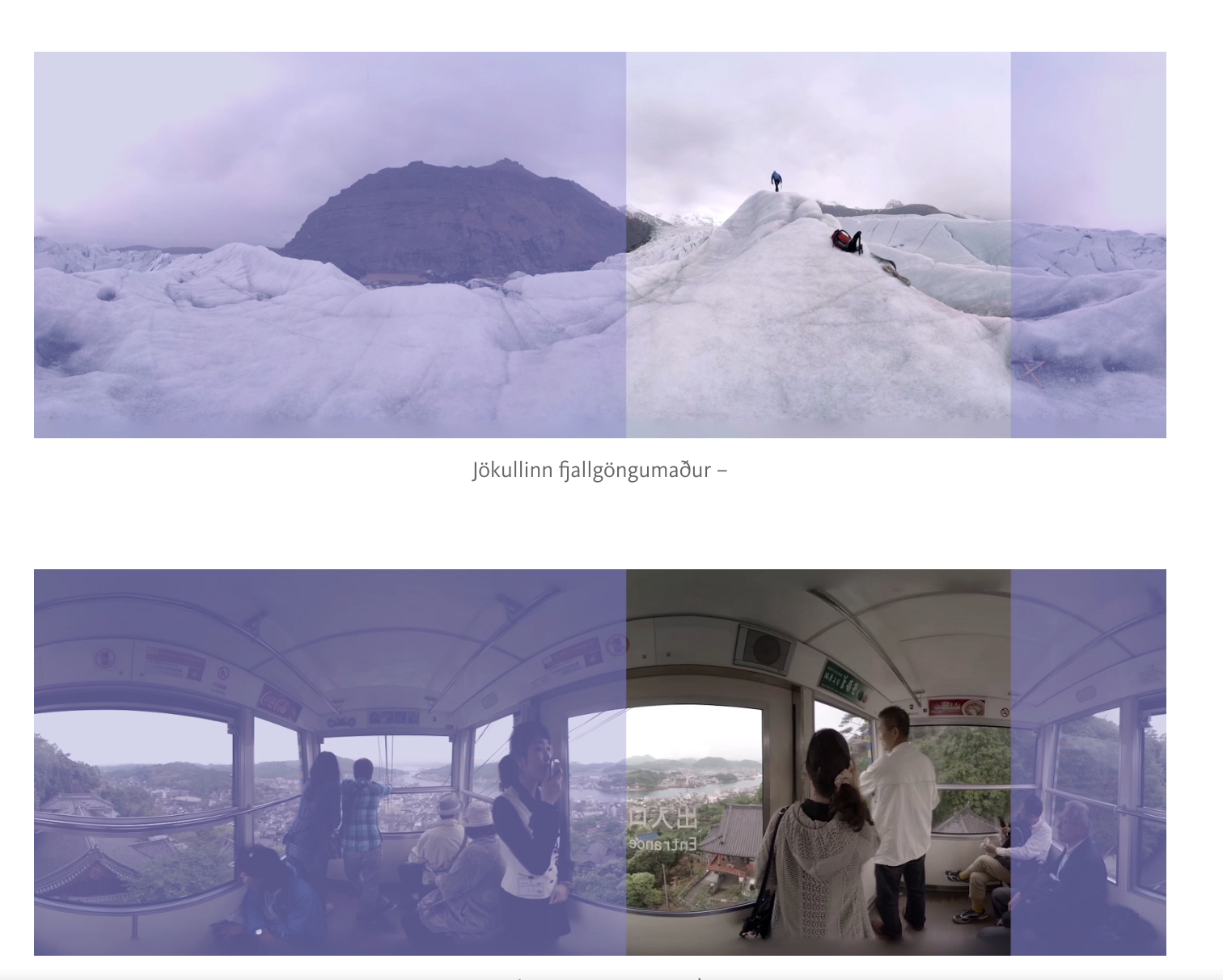For our second class of Doing Good is Good Business we did a exercise around prototyping and design theory to come up with a product that could possibly help a user with a problem. One of the main concepts of ITP is to fail quickly, learn from your mistakes and move on to this next idea. This quick experiment reminded me of that process. It also didn't give us a lot of time to dwell on what the best ideas could be for this project. With that said, sometimes not overthinking an idea can be an effective way to get out of your head and come up with something that you may have never thought of before.
The problem proposed
Redesign the experience of communication with a loved one far away with a partner.
Here are the steps in the way we approached the problem proposed
Step 1: Interview the partner -- find out what the issues were with the last time she communicated with a loved on
Step 2: Dig deeper --- find a story that is important for your partner. This was to be more of a human-based narrative. I focused on the relationships of her and her loved one
Step 3: Capture findings: We wrote out the needs and insights from the interview.
Step 4: Define the problem statement: My partner, Ariana, needs an easy and affordable way to chat with her Grandparents, but maybe nit in video form because she's not always in an appropriate place to chat with Grandma (and Grandma gets annoyed when Ariana doesn't want to pick up the video call)
What I concluded is that Ariana wants to have a way to chat with Grandma that is as easy as FaceTime (which can only use a camera) but without video.
Step 5: We then sketched out 5 radical ways that you could meet the user's needs
Step 6: Share the solutions with the partner
Step 7: Take the feedback from the 5 options and generate a new solution
Step 8: Use anything from the junk shelf to create a prototype -- this gives the partner the opportunity to interact with your proposed prototype.
Step 9; Take noes on What worked, what could be improved, and questions and ideas that came up.
Protoype
Here is a photo of the quick prototype that I created based on Ariana's problems talking to her Grandmothers.
This is supposed to be an analog house phone that has a touch screen on the handle. The three buttons are the people most frequently called (Ariana, Son, Daughter-in-law). If Grandma were to call Ariana by pushing her button, it would call over the internet (affordable) to Ariana and Ariana would have the option to receive the call as either a video chat or as simply a phone call (in case it wasn't appropriate to be seen on video). This phone can also be used as a regular landline (the base with traditional buttons is not shown here).


I think this was a great experiment. At times I found myself getting stuck because I was trying to come up with the best answer, but then I noticed I was doing this and tried to just let whatever come to me, come.
This experiment also really hit home on the first principle of the 9 Principles for Digital Development that were highlighted in the reading--- Design WITH the user. I can see now how important this piece is to have the proper implementation.
In regards to the other readings
I want to post these two articles here because they were really interesting and I want to be able to reference them again
Data that Turned the World Upside Down
Fake News is not the only problem
Below is a quote that really stuck out at me from Gilad Lotan when he talked about how bias, propaganda, and deliberately misleading information are much more prevalent and do more damage than fake news.
"In the cases that I was investigating, neither side of the graph’s frame was false per se. Rather, each carefully crafted story on either side omitted important detail and context. When this happens constantly, on a daily basis, it systematically and deeply affects people’s perception of what is real."
Here he is referencing the information given about an Palestinian-Israeli boy that stabbed an Jewish-Israeli boy and how the proper editing of the videos to make it appear that the Jewish people were the one to blame in this incident. Two different videos were shared in the Palestinian community and the Jewish community. The former showed the Jewish people at fault and the later showed the Palestinian boy at fault. The graph he talks about is the data that shows the community's online views of these two videos. "Two very different versions of this story spread within disparate echo chambers" of the communities.
This is a very important point that we all need to be aware of when we are seeking information, especially hot topics of the moment--- like political information.
In the second article, it talks about how a company used our digital imprint of our social media exchanges to pump targeted ads to either persuade individuals to vote for Trump or deter them from voting at all.
This was definitely a troubling article but in a world of Big Data, I'm not surprised that there are initiatives that are taking full advantage of online, social media findings.
On the other hand, and how it pertains to this class, Big Data can also be used for good. I'm really interested in using data science to further the impact of our ideas, both in this class and for future projects.
Question for class panel
A question that I have for Gilan would be for him to explain in a little bit more detail the concept of algorithm gaming on Twitter. This is a concept that a group of individuals push trends intentionally in the media by using the same hashtags all at once on Twitter. How do these groups form?
Another question I have is that in a time when there are a lot of not-fake-but-not-completely-true information, how to Data Scientists work with this type of data in their analysis?



